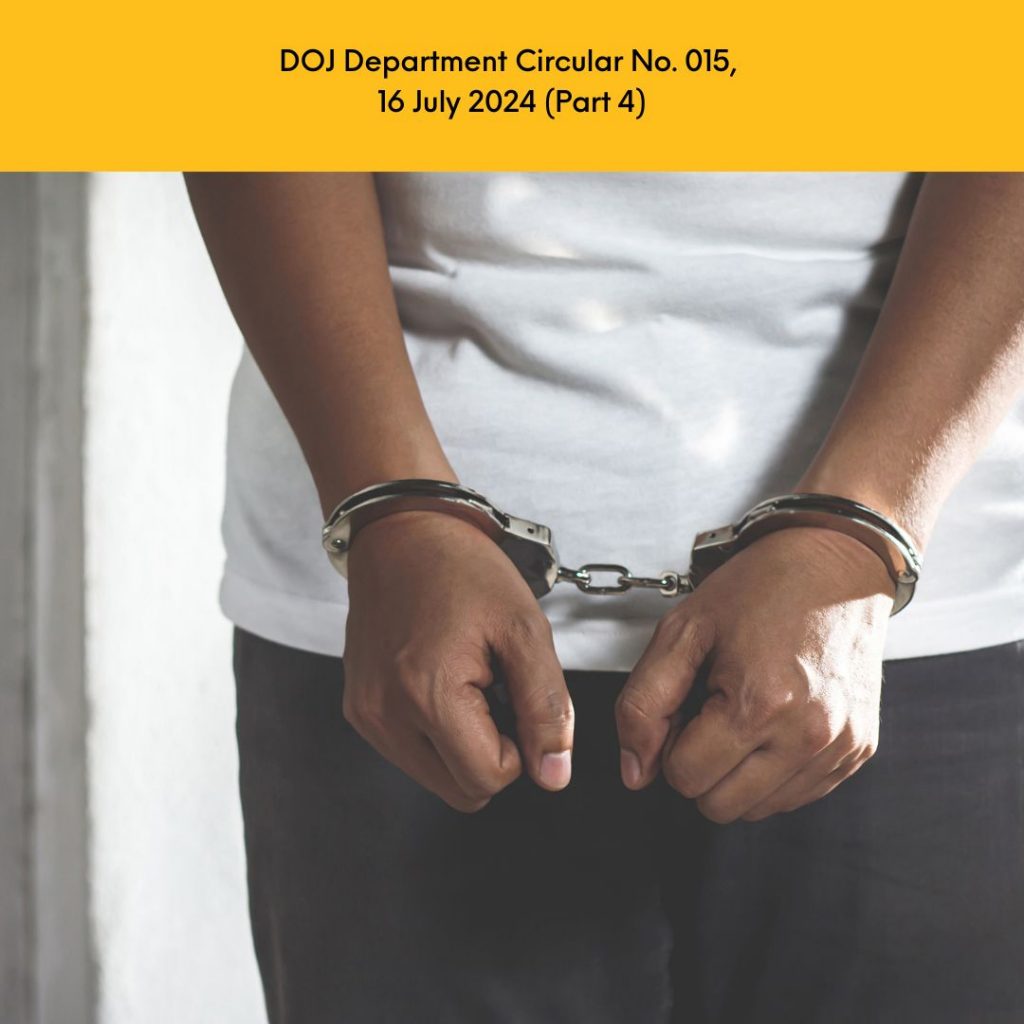
Published 13 December 2024, The Daily Tribune
Part IV: Inquest Proceedings and E-Inquest Proceedings
An inquest is an informal and summary investigation conducted by a prosecutor (or another authorized officer) in cases involving persons detained without a court-issued warrant of arrest. The purpose is to determine if the person should remain in custody and be charged in court. This process ensures the legality of a detention following a warrantless arrest and quickly establishes if there is a basis for formal charges. (Sec. 12)
- Filing of Referral Letter
• The process starts with a referral letter filed by the law enforcement agency (LEA) or, in cases of a citizen’s arrest, by the private citizen who conducted the arrest.
• The referral must include the original letter, two duplicates, and a copy for each respondent.
• The letter should contain evidence like the affidavit of arrest, investigation report, and complaint-affidavit.
• The referral must be submitted within the timelines set under Article 125 of the Revised Penal Code (RPC):
-12 hours for light offenses,
-18 hours for correctional offenses,
-36 hours for afflictive or capital offenses.
2. Review by the Prosecution Office Head
• Upon receipt, the referral is reviewed by the head of the prosecution office (or a designated prosecutor) to verify the validity of the warrantless arrest.
• If the arrest is deemed valid, the prosecution office evaluates the completeness of the required evidence to establish the crime elements.
• Referrals deemed complete are docketed and assigned to an inquest prosecutor. If incomplete, the LEA or arresting citizen must submit additional evidence within the Article 125 timeline.
• Failure to provide sufficient evidence within the allowed period results in the detained person’s release, and the records are returned to the referring LEA or forwarded to the appropriate LEA for possible refiling.
• If the arrest is deemed invalid, the detained person is released immediately.
3. Inquest Proceedings
• During inquest, the prosecutor ensures that the detained person has legal representation, and the counsel has received the referral and all attachments.
• The inquest prosecutor explains the nature of the proceedings, the charges, and the detained person’s right to a preliminary investigation.
• The prosecutor administers an oath to all affiants and may ask clarifying questions to resolve factual issues.
4. Preliminary Investigation Option
• If the respondent opts for a preliminary investigation, they must sign a waiver of the Article 125 period in the presence of counsel. This waiver allows the respondent to apply for bail, and the investigation must conclude within 15 days.
5. Resolution by Inquest Prosecutor
• The inquest prosecutor resolves the case promptly, making preliminary determinations on the validity of the arrest and establishing if there is prima facie evidence with reasonable certainty of conviction. If applicable, the prosecutor prepares the information for filing in court.
E-INQUEST OVERVIEW
The E-Inquest is a virtual option that allows inquest proceedings to be conducted via videoconferencing. This feature offers convenience, particularly for remote cases or when physical presence is impractical. E-Inquest proceedings follow the same guidelines as regular inquests, with minor adjustments for virtual setup. (Sec. 12)
- Initiation and Filing
• The inquest prosecutor can initiate an E-Inquest either independently or upon request from the LEA or arresting citizen, provided all parties have ICT access.
• All documents, including the referral letter and evidence, must be submitted electronically in PDF format to the prosecution office’s official email.
2. Videoconference Setup
• The prosecution office provides the LEA, arresting citizen, and respondent’s counsel with videoconference access details (e.g., link and passcode) for the hearing, which is recorded for accuracy.
• During the videoconference, the inquest prosecutor:
-Confirms the identities of all parties.
-Records relevant events and statements in the official minutes.
-Administers an oath to all affiants.
-Conducts clarificatory questioning as needed.
3. Preliminary Investigation Waiver in E-Inquest
• If the respondent opts for a preliminary investigation, the inquest prosecutor directs the LEA, arresting citizen, or counsel to facilitate the execution of a waiver of the Article 125 timeline. This waiver must be signed by the respondent and counsel, then emailed to the inquest prosecutor.
4. Submission of Physical Documents
• Hard copies of the original referral letter, required documents, and waivers must be submitted to the prosecution office within the same time frame as regular inquests, ensuring compliance with procedural rules.
TIMELINES FOR RESOLUTION (Sec. 17)
All inquest cases must be resolved on the day of the inquest, with the resolution transmitted to the office head for approval by the next working day. This prompt resolution requirement ensures swift decisions on the validity of detention and possible charges.
For more of Dean Nilo Divina’s legal tidbits, please visit www.divinalaw.com. For comments and questions, please send an email to cad@divinalaw.com.

